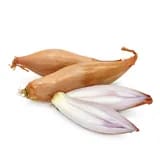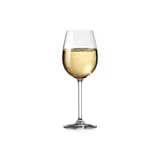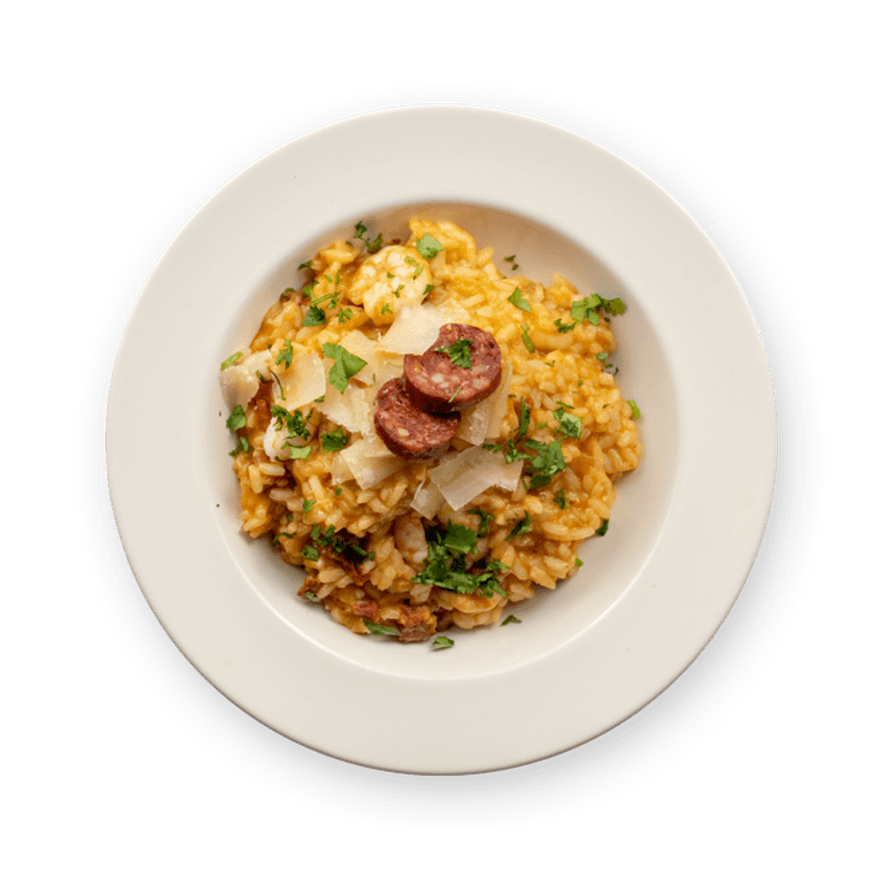Shrimp & Chorizo Risotto
911 reviewsCreamy risotto with tender shrimp and spicy chorizo -- this dish has it all!

Ingredients
Make sure you have...
Utensils
Stovetop, Pot (small), Kettle
recipe

Step 1
If needed, thaw the shrimp. Peel & thinly mince the shallot.

Step 2
If needed, take off the skin of the chorizo & small dice it.
Step 3
Heat a drizzle of olive oil in a pot, over medium heat. Add the chorizo & shallots. Sauté for 2-3 min.

Step 4
Rehydrate the broth in 250ml of hot water per person.


Step 5
Add the rice, then deglaze with the white whine until all the liquid is absorbed.
Step 6
Add the broth little by little. Stir after each addition and let the broth evaporate before repeating the operation, until the broth is used up.


Step 7
Season with salt & pepper. Add the cooked shrimp & parmesan. Continue cooking for 5 more minutes.
Step 8
Once the rice is cooked, stir in a dab of butter. Serve the shrimp & chorizo risotto on a plate. Re-season to taste & enjoy !
Personal notes
Add your own flavor!
Nutrition facts
Average estimated amount for one serving
| Energy | 473 cal. |
| Fat | 13 g |
| Carbohydrates | 58 g |
| Protein | 23 g |
| Fiber | 1 g |
Values are based on an average estimate for one serving. All nutrition information presented on Jow is intended for informational purposes only. If you have any concerns or questions about your health, please consult with a health-care professional.
On average, one serving of the recipe "Shrimp & Chorizo Risotto" contains 473 Energy, 13 g of Fat, 58 g of Carbohydrates, 23 g of Protein, 1 g of Fiber.
Price per portion
| € | Nos recettes à -2 € par portion |
| €€ | Nos recettes entre 2 € et 4 € par portion |
| €€€ | Nos recettes à +4 € par portion |
Please note, the price above is dependent on your grocer and the available products in the grocery store you chose.
Scores


C Nutri-score
The Nutri-score is an indicator intended for understanding nutritional information. Recipes or products are classified from A to E according to their food composition to promote (fiber, proteins, fruits, vegetables, legumes, etc.) and foods to limit (energy, saturated fatty acids, sugars, salt, etc.).
E Green-score
The Green-score is an indicator representing the environmental impact of food products. The recipes or products are classified from A+ to F. It takes into account several factors on the pollution of air, water, oceans, soil, as well as the impacts on the biosphere. These impacts are studied throughout the product life cycle.
Retrieving reviews...


